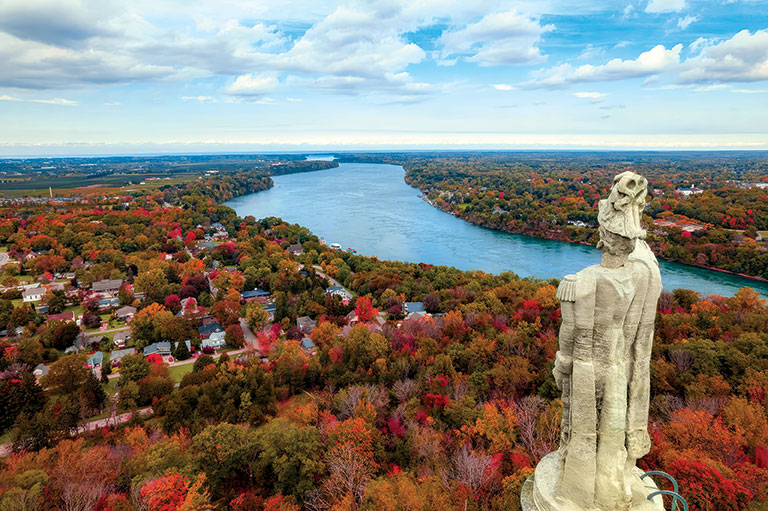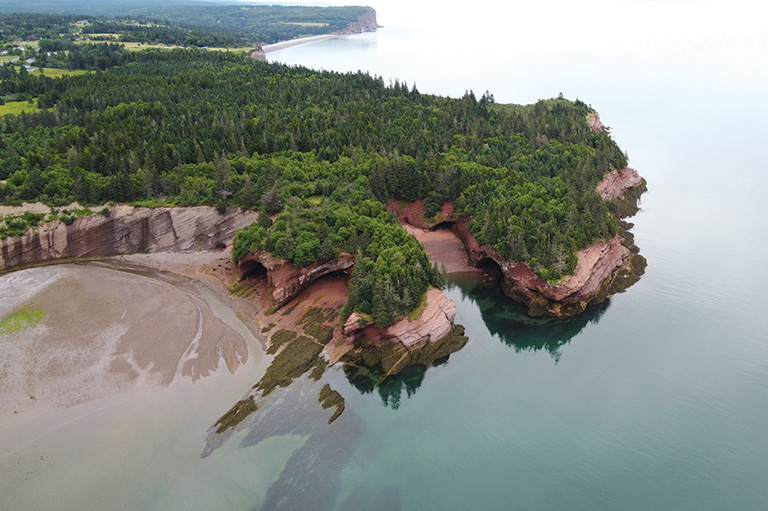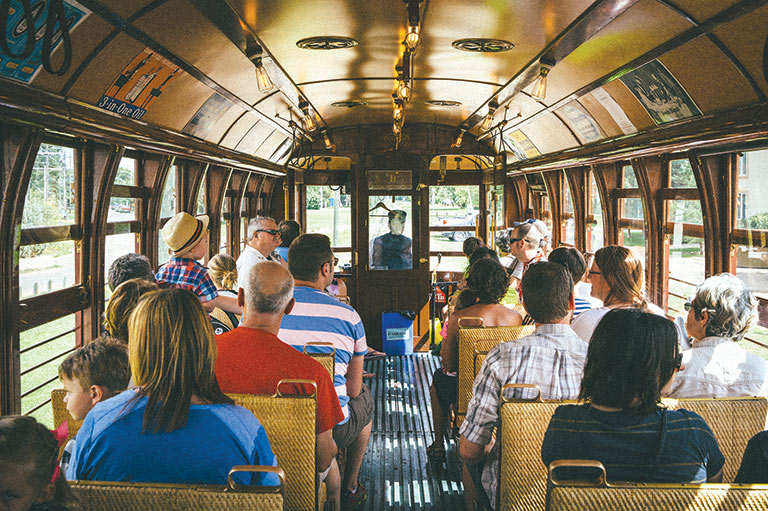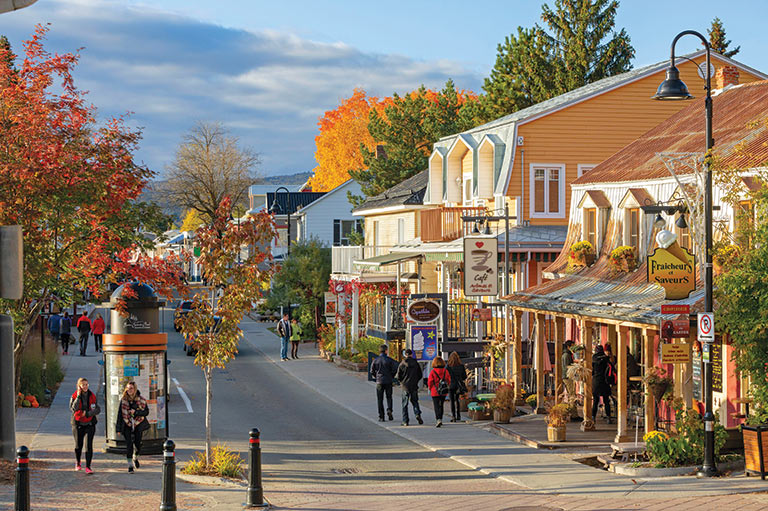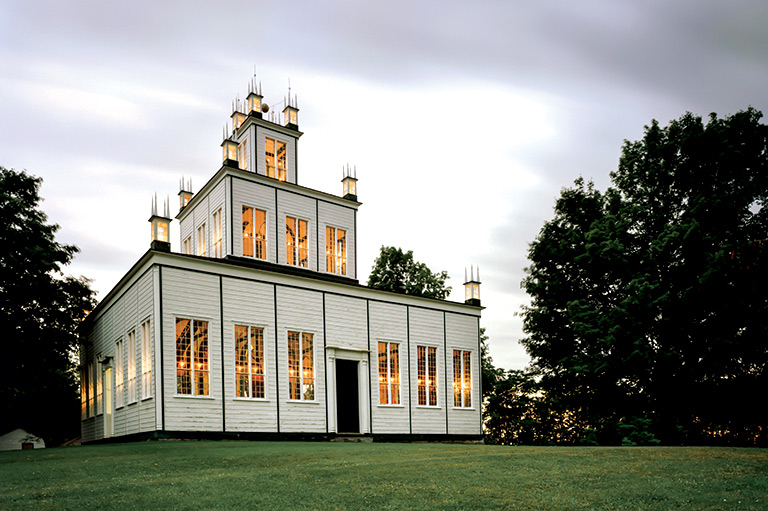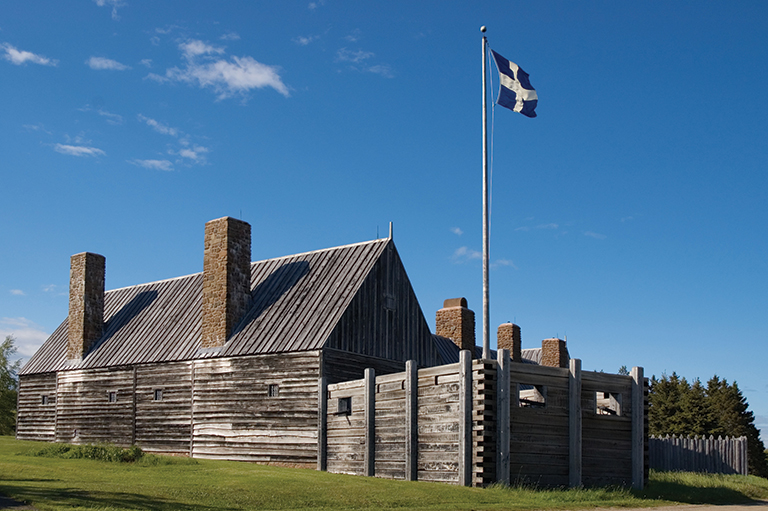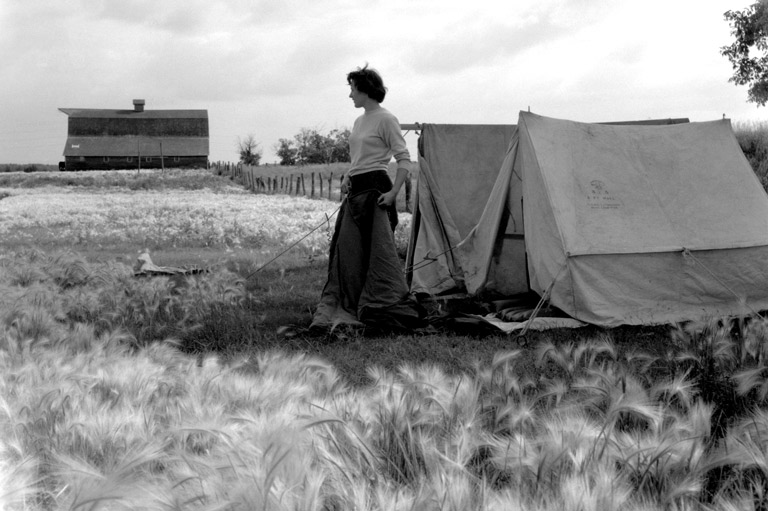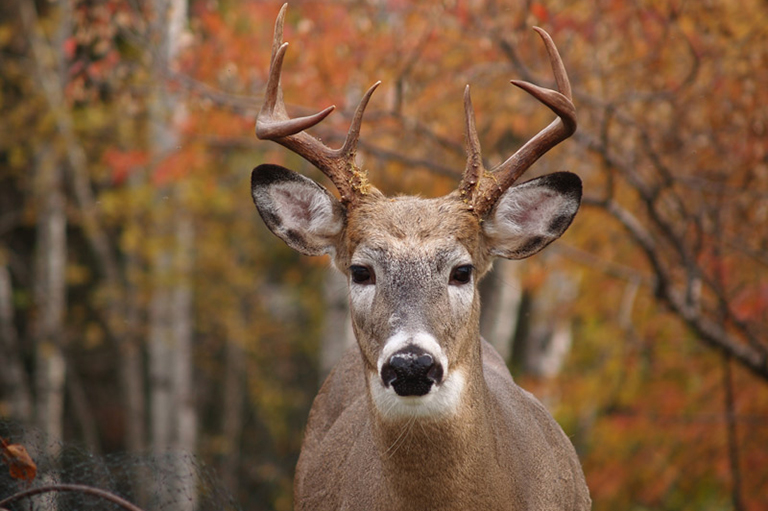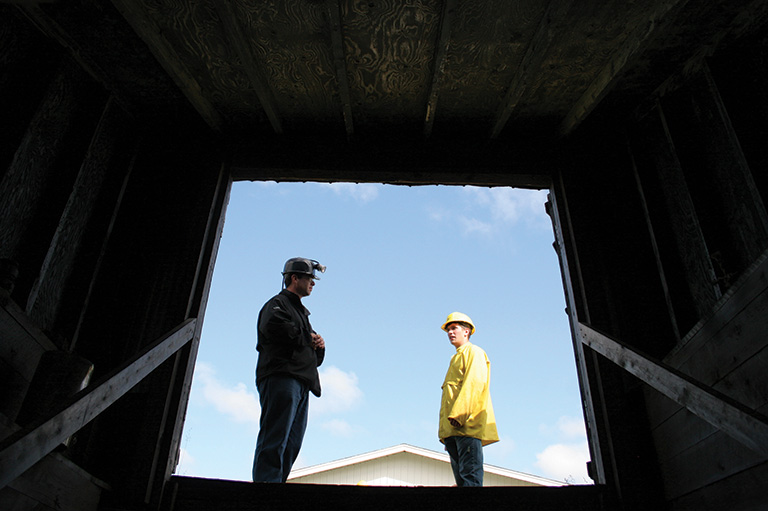Flowering Regeneration
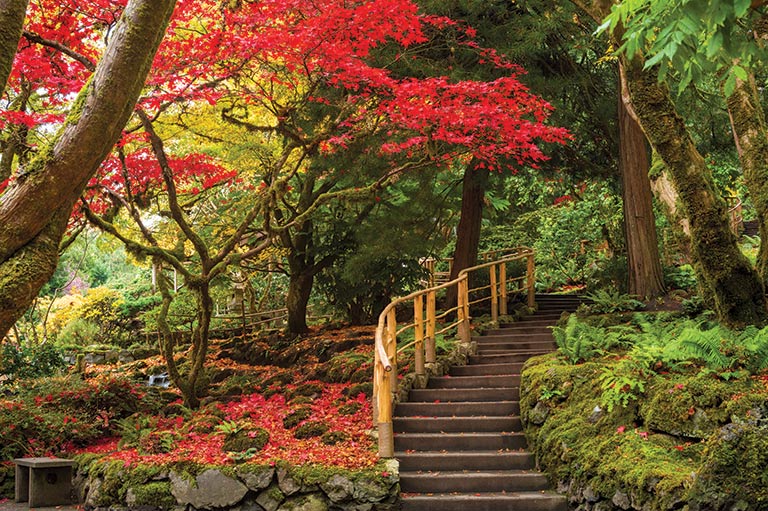
Jennie Butchart was a talented and energetic woman who transformed an industrial site north of Victoria into the showpiece Butchart Gardens, one of the best-manicured and most popular gardens in the world.
Situated alongside Tod Inlet on the west side of Vancouver Island’s Saanich Peninsula, the spectacular gardens include a former limestone quarry that in the early 1900s was used to make cement for the burgeoning province of British Columbia. The cement company was owned by Robert Butchart, whose wife, Jennie, started to plant flowers around their adjacent residence in 1904, without any idea of the renown her garden would eventually achieve.
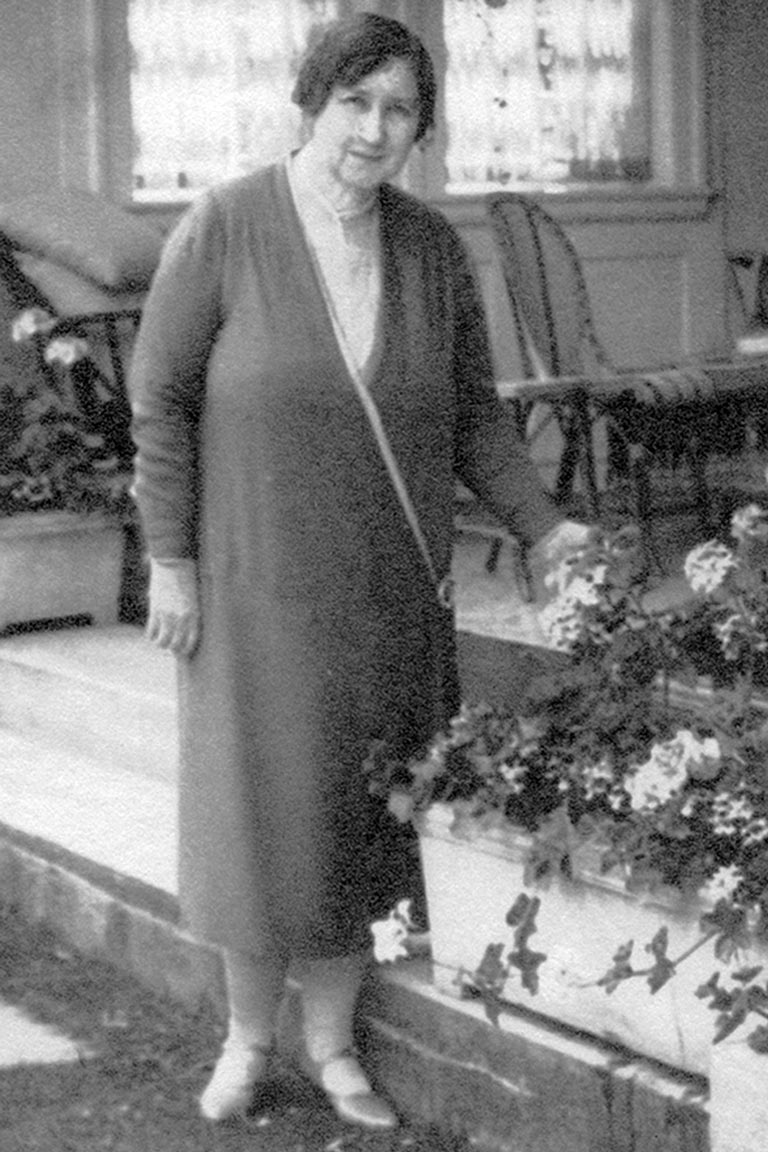
In 1902, Robert Butchart formed the Vancouver Portland Cement Company and began to acquire land on Tod Inlet. Construction of both the cement factory and a substantial wharf was initiated in 1904, and the manufacture of cement began in March 1905. The company prospered, and Tod Inlet quickly became a thriving community. By 1911, there were 368 employees at the plant, including Chinese, Sikh, Indigenous, and European workers.
Jennie Butchart continued to enlarge her garden, and before long the Butcharts’ house and gardens began to attract attention and visitors. A Japanese garden, including a grand torii gate, was built with the help of Isaburo Kishida, a Japanese landscape artist. Cement was readily available from the nearby plant, and the garden’s design includes bridges, stone paths, and flowing water alongside varieties of flowers.
As the limestone deposits were exhausted in 1909 and the quarry closed, Jennie Butchart began to employ Chinese workers from the cement plant as gardeners. With the goal of beautifying the gaping hole of the quarry, she hired farmers to bring in soil to cover the barren ground, eventually forming the famed Sunken Garden.
Jennie Butchart was fearless and could be found hanging in a bosun’s chair while planting ivy on the quarry walls. At the same time, her generosity was legendary. Her growing floral showcase attracted visitors from afar, and she served tea to many of them, including complete strangers.
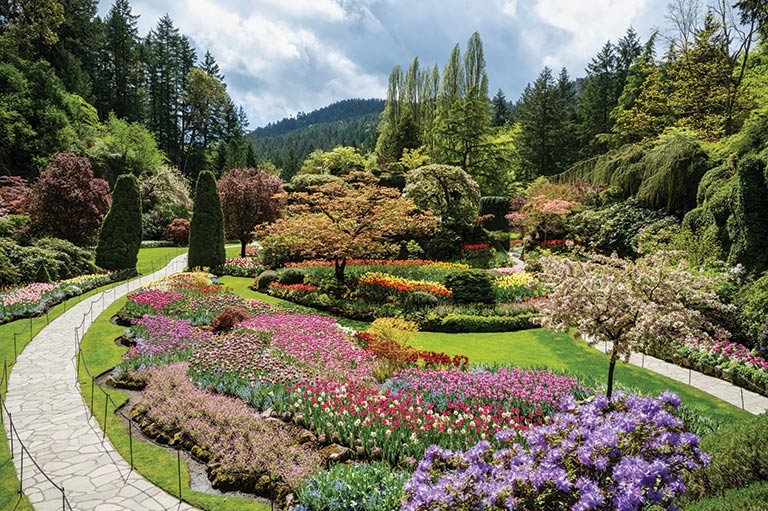
Awash with the vibrant magentas, pinks, and purples of rhododendrons and azaleas, the Sunken Garden is today the largest and most distinctive part of Butchart Gardens. At the south end, the Ross Fountain sprays water in a number of huge jets that are like a troupe of choreographed ballerinas, constantly changing shape, size, and even, after dark, colour, thanks to a programmable LED lighting system. A total of four distinct gardens were developed by the late 1920s, including the rose and Italian gardens.
With designs by architect Samuel Maclure, what was originally the Butcharts’ small summer residence was enlarged and renovated between 1911 and 1932. The refurbishments made the Butchart home — which they named “Benvenuto” (Italian for welcome) — much more luxurious, with a pond, billiard room, and even a bowling alley. By 1921 the cement plant had been largely shut down, except for minor manufacturing such as for drainage tiles and flower pots that continued until the 1950s.
Meanwhile, Jennie Butchart’s garden continued to grow and to prosper. In 1931, she was named the city of Victoria’s “best citizen” for opening the gardens to visitors every day of the year. That decade, the CPR’s cruise line boasted that Butchart Gardens was “one of the most enchanting beauty spots on this continent.”
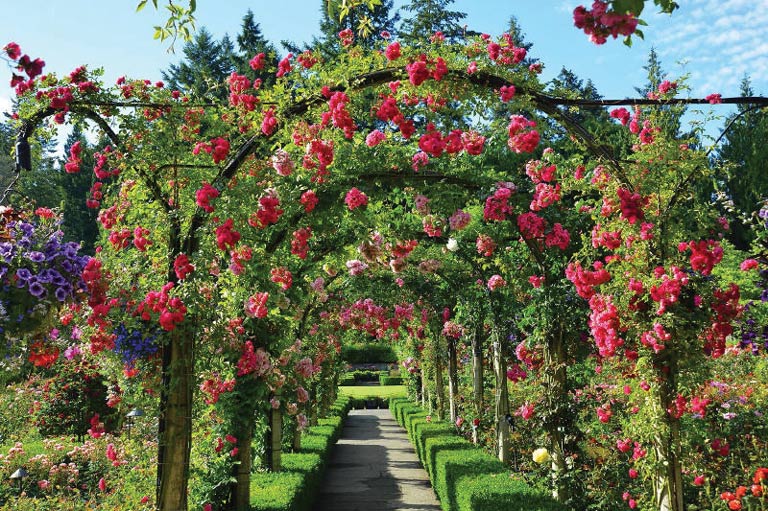
Until recently, tours were offered seasonally aboard small electric boats that travelled past key points of interest and that allowed visitors to see some of the wildlife of Tod Inlet — including otters, eagles, and herons. Remains of the cement plant can still be found within the gardens, and multiple visits are required to take in the enormous historical and botanical richness of the site.
In the summer, more than nine hundred bedding-plant varieties are featured as flowers come into full bloom. Several times per week in the summer, the gardens are illuminated as the sun sets, providing a very different evening experience. Live music is performed in July and August by entertainers that include the Victoria Symphony, while on Saturday evenings spectacular fireworks light up the night sky.
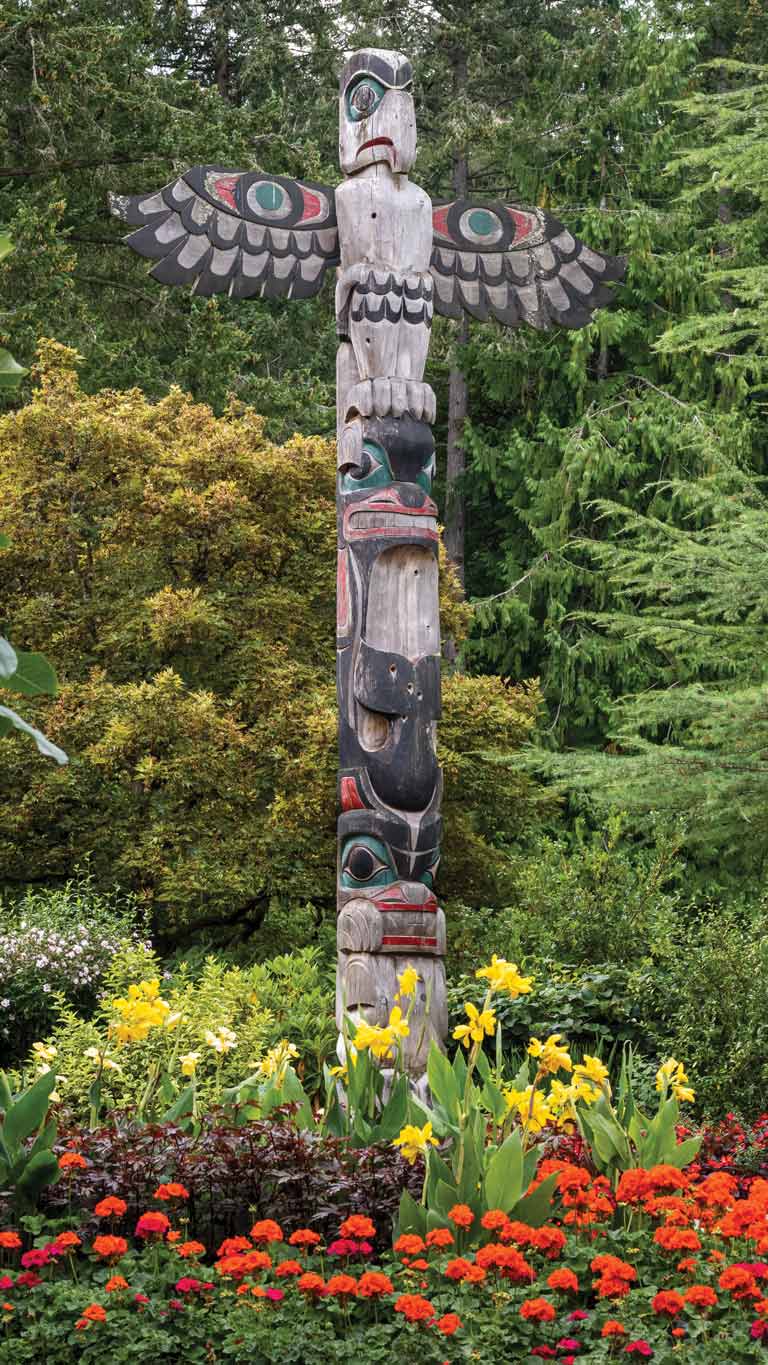
In 2004, on its one hundredth anniversary, Butchart Gardens was designated a National Historic Site. As part of the celebrations, two towering totems were carved in the Coast Salish style by Charles Elliott of the Tsartlip First Nation and Doug LaFortune of the Tsawout First Nation. The poles are one of the ways Butchart Gardens recognizes its presence within the traditional territory of the WSÁNEĆ (Saanich) people.
In 1939, Robert and Jennie Buchart finally stepped aside, gifting ownership of the property to their grandson Ian Ross on his twenty-first birthday. Ross was responsible for many developments, including the eponymous fountain. Today, the owner and managing director is Robin-Lee Clarke, Robert and Jennie Butchart’s great-granddaughter. In 2009 she introduced the Rose Carousel, a “menagerie” of thirty handcarved wooden animals and chariots on which visitors, especially younger ones, love to ride.
To serve the million-plus annual visitors, Butchart Gardens employs as many as six hundred people during the peak season, including fifty fulltime gardeners who maintain twentysix greenhouses that produce colourful flowers destined to bloom across twenty-two cultivated hectares on the fifty-five-hectare property. It’s an exceptional creative achievement that has matured and evolved over time.
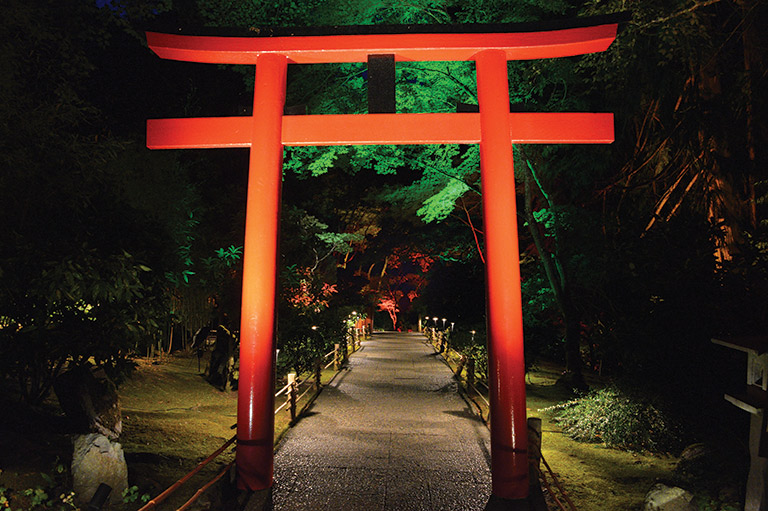
With 7 uniquely curated newsletters to choose from, we have something for everyone.
IF YOU GO
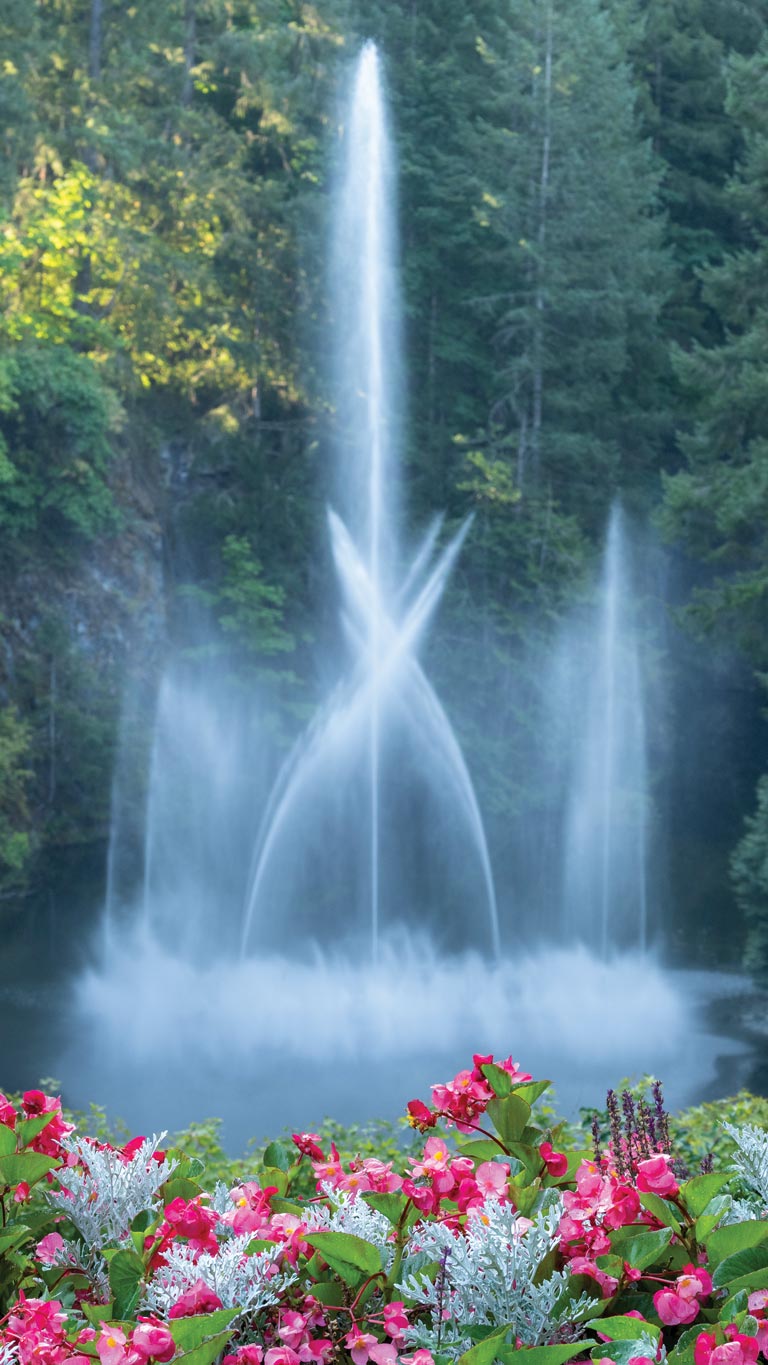
GETTING THERE: The Butchart Gardens is located in Brentwood Bay, B.C., about twenty-two kilometres north of Victoria. Besides driving your own vehicle, bus trips are available with BC Transit or as part of a private sightseeing tour that includes admission to the gardens.
SEE AND DO: If you can, set aside most of the day to wander through this floral wonderland. Visitors are asked to follow the garden etiquette, which includes staying on paths, not picking flowers or fruit, speaking quietly, and refraining from jogging or running.
EAT AND DRINK: The Dining Room Restaurant offers garden views from within the original Butchart family residence as well as afternoon tea. Casual and lighter fare is available seasonally at the Blue Poppy Restaurant (a converted greenhouse), a coffee shop, and a gelateria.
We hope you’ll help us continue to share fascinating stories about Canada’s past by making a donation to Canada’s History Society today.
We highlight our nation’s diverse past by telling stories that illuminate the people, places, and events that unite us as Canadians, and by making those stories accessible to everyone through our free online content.
We are a registered charity that depends on contributions from readers like you to share inspiring and informative stories with students and citizens of all ages — award-winning stories written by Canada’s top historians, authors, journalists, and history enthusiasts.
Any amount helps, or better yet, start a monthly donation today. Your support makes all the difference. Thank you!
Themes associated with this article
Advertisement
You might also like...
Save as much as 40% off the cover price! 4 issues per year as low as $29.95. Available in print and digital. Tariff-exempt!

